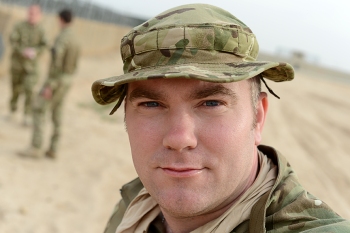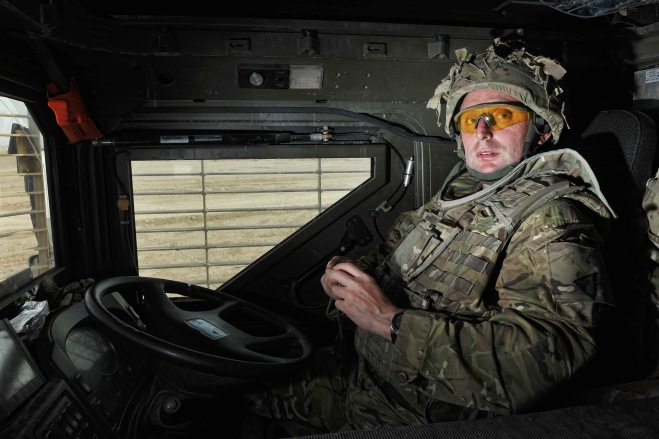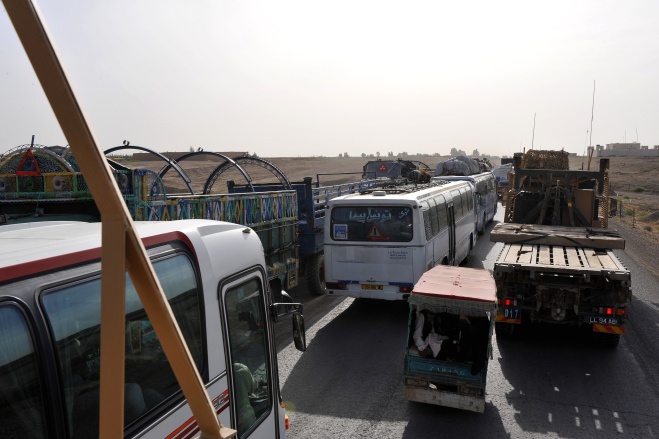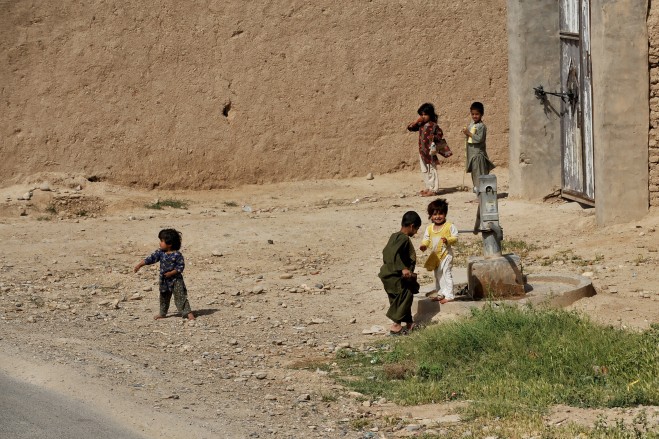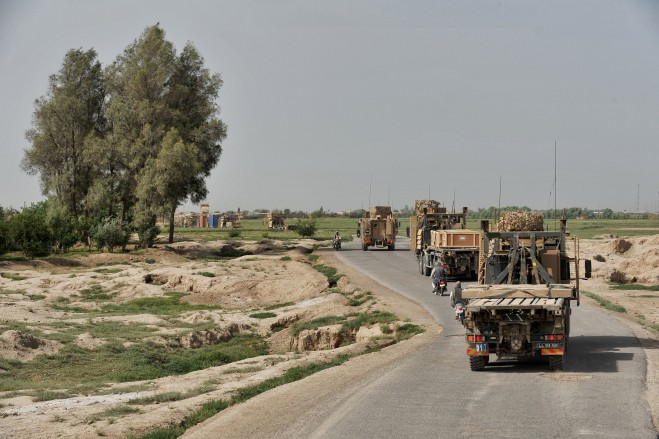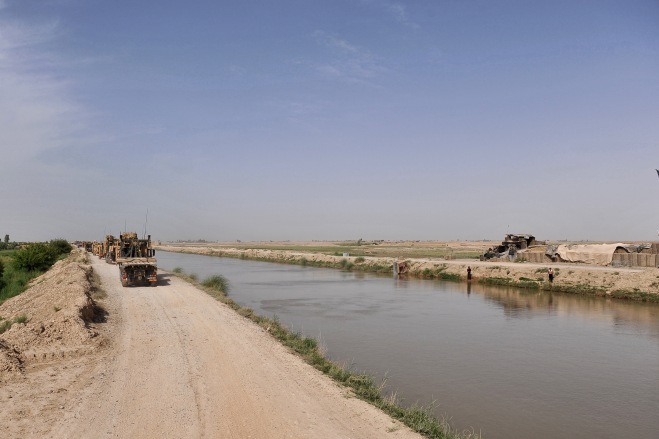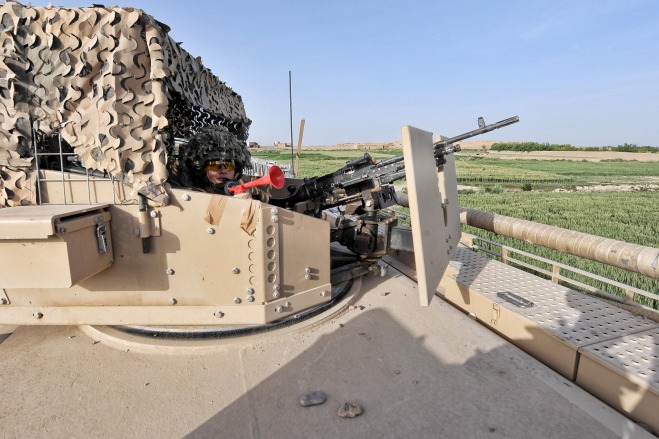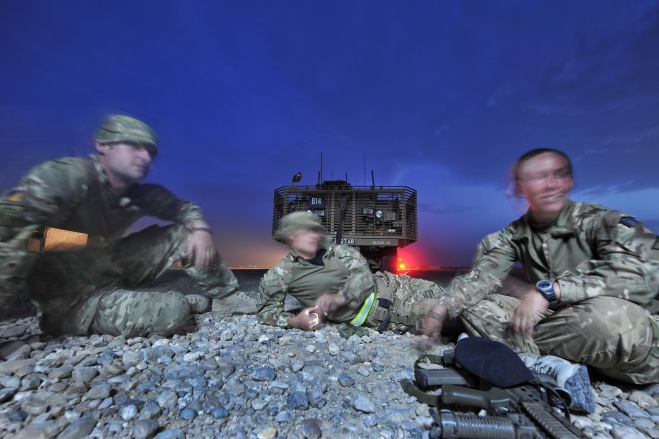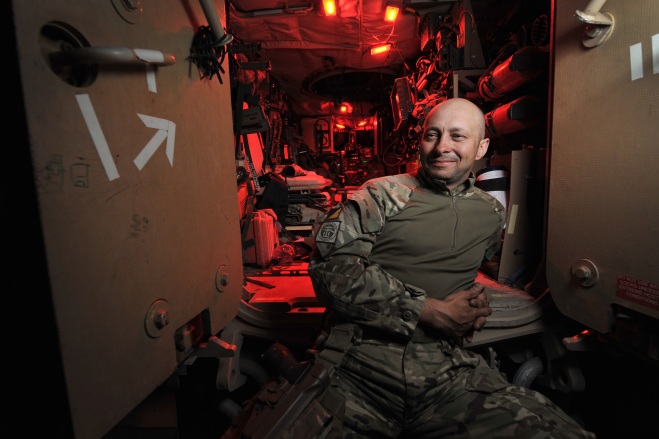Corporal Si Longworth is one of 38 trained British Army photographers. He left a career in aviation to pursue his passion for photography; capturing everything that military life has to offer. He is currently in Afghanistan as the Task Force Helmand Photographer on Op HERRICK 18.
As you all know, this blog isn’t Afghan specific. It’s a blog about life as an Army Photographer. It just so happens that I opened it up in sunny and sandy Helmand Province. So, I am going to take a little break from the routine this time as I have received a number of questions, via email or my new-found friend; twitter, about kit and equipment.
Being employed by Her Majesty has certain benefits and one of which is being ‘issued’ with enough equipment to be able to do your job with. The Army Phots, unlike our Navy or RAF sisters are fortunate enough to be issued with what is known as a ‘Kit for Life’. What happened is this. When I finished my training to become a professional Army Photographer, I headed down to Army Media and Communications in Army Headquarters in Andover and made a very easy trade; my signature for a huge Pelican Case (Peli-Case) full of photographic kit and equipment. More ‘stuff’ than I could carry out to my car in one go. It seemed a pretty fair deal to me.
My kit for life (or the five years I have left to serve) was a one-time issue that is to last me until I leave the Army or photographic trade. As it is one-off, we must care for it as if it was our own. There are limited spares in the system, and so it really is in my best interest to look after it all. As I said before, the Navy and the RAF aren’t so lucky, as they generally have to share cameras and kit. There could be up to five photographers posted into the same unit, so I guess it all make sense.
So for those who are wondering exactly what I am able to use at my disposal, here is an image of most of the items I received on that day. Some of the items were not essential for Afghan so has stayed in my locker back in Tidworth, but this is the bulk of it.
| 1. Light stand | 13. Manfrotto tripod and head |
| 2. Lastolite dual reflector (gold/white) | 14. Nikon 70-200 f2.8 |
| 3. Toshiba laptop | 15. Nikon 14-24 f2.8 |
| 4. Card readers (XQD/SD/CF) | 16. Hoya 77mm filters |
| 5. LaCie 1Tb hard drives | 17. Lastolite extending handle (small) |
| 6. Memory cards (XQD / CF) | 18. Nikon SB900 |
| 7. Nikon D3 | 19. Pocket Wizard II |
| 8. Nikon D4 | 20. Nikon ML-2 |
| 9. Nikon D800 | 21. Nikon SU-800 |
| 10. Fuji S5 Pro (Infra red) | 22. Nikon battery chargers and batteries |
| 11. Canon G12 | 23. CR 123 battery and case |
| 12. Lastolite Ezybox hotshoe (60cm) |
Personal ‘goodies’
As I am sure you will agree, this is a formidable bounty. I use my D3 cameras for the majority of work out in Afghanistan, as they are coming to an end of their contract life. I brought my D4 / D800 combo out, but as they have to last me five years, they have spend most of their time sleeping in the locker in my office. The dust and grit out here is brutal so I protect them for their own good.
Having been a keen photographer for years I have also built up a selection of items that I have found useful and some of those bits found their way onto the flight out to Afghan. Here they are:
| 1. 7DayShop battery chargers | 15. Flash battery packs |
| 2. Manfrotto ‘Justin’ clamp | 16. Nikon SC-29 |
| 3. Spare clamp | 17. Rogue Flashbender large |
| 4. Cokin Z-Pro filters | 18. White umbrella |
| 5. Lastolite ‘Joe McNally’ tri-flash bracket | 19. Tri-fold light stand |
| 6. Home-made snoots | 20. Hard drive carry cases |
| 7. Home-made grids | 21. Petzl head torch |
| 8. Cold Shoe brackets | 22. LCW Vari-ND filter |
| 9. Dictaphone | 23. Tiffen Var-ND Filter |
| 10. 7DayShop 2900mAh Ni-Mh AA batts | 24. Tri-fold white brolly |
| 11. Expo disc | 25. Sand bags |
| 12. Black tape/self amalg’ tape | 26. AstroScope |
| 13. Nikon MC-36 | 27. Nikon 50mm f1.8 |
| 14. BlackRapid connectors | 28. Benro ball head |
You probably hear me banging on about dirt a lot out here. Sometimes it can be horrendous, and you can be stuck out in it. If you get caught out with your kit in the open in one of these, you had better pray.
Cleaning and maintaining my cameras and lenses is an everyday necessity. The Nikon cameras are tough. Very tough, and can take a beating. I have seen press photographers come out to visit with near silver bodies, not because they are after the latest fashionable look, but because all the black plastic has been warn down through hours of hard-core use in harsh environments, and are still going strong. One of these photographers; Ben Birchall was touting a pair of pretty battered D3s.
Self amalgamating
His cameras may have been worn, but his lenses were covered in what appeared to be tape, and I asked him why. He told me that he had been shooting in sandy environments for many years, and over those years his ‘glass’ (lenses) had taken a beating. In order to prevent this, he had carefully wrapped self-amalgamating tape around each lens, and then topped it off with black insulation tape.
For those who are not in the building or electrical trade, Self-amalgamating tape is: “A very useful derivative of insulating tape which can be used for waterproofing connections. To use, the top protective layer is peeled off and the rubbery self- amalgamating tape underneath is wrapped tightly around the connection to be waterproofed. Eventually, the layers of this tape will merge together and create a waterproof seal. This tape is highly recommended for automotive work and also aerial installations.”
I couldn’t have put it better myself. I set about acquiring some and have since protected my three main lenses out here. (I don’t use the manual focus ring or the Vibration Reduction (VR) facility in Afghanistan, either)
The other issue I have out here is lens filters. 77-millimetre specials. It doesn’t take long for the abrasive elements in the air to attack them. Helicopters are the worst. When everyone is looking away to protect themselves from the flying debris, there are usually only a few people looking towards the landing area; those with cameras and those who haven’t yet been smacked in the face with a stone from the Chinook downwash. Both types of individual are stupid, but one of them is being paid to look, and knows he has a spare 77mm UV filter in his pocket. Fortunately, I have been lucky so far, but as you can see, my predecessor wasn’t so.
The team at Army HQ also have a secret locker, which I was once allowed to look inside for approximately a third of a second. It contained 300mm, 600mm and a 105mm lens, Elinchrom Ranger lights and all sorts of desirable items. I am told that should I ever need to borrow something from the locker it’s door can be set to remain open long enough for me to take something off the shelf. I remain hopeful.
So, all in all I am pretty well equipped to take on most situations I come across and with respect to photography, the Army has looked after me well.
If you would like to know more about the kit I use or how I use it, please feel free to leave a message on this blog or tweet me @Si_Army_Phot
More tc…




















